Blog

Customer Experiences are critical for success :
Poor customer experiences can account for major losses in revenue for brands that neglect to satisfy consumers. In fact, recent research shows that, on average, companies lose over $83 billion dollars every year because people, on some level, simply did not have a positive customer experience. It is important to understand that successful marketing is more than only analyzing a few key metrics and then running a program on autopilot.
Today many customer experiences are fragmented and this can lead to frustration. This often includes many different departmental silos attempting to engage in disparate outbound communications to customers that are already using multiple channels. It can all become overly complex and confusing very quickly. And this frustration can lead to more than just the loss of an immediate sale. Poor word of mouth, lost future sales, and even diminished credibility are all potential dangers.if one customer has had a bad customer experience it is likely that others are going to as well.”
Show more..
Earning Customer Loyalty through Data-driven Solutions:

Data Conundrum:
The Challenge of Intelligence is a “derailing issue” for marketers, due to the following key points:
- Volume: Data generation from millions of customers
- Velocity: Real-time, non-stop data generation
- Variety: Independent, fragmented data sources
- Veracity: Lack of data synthesis creates distrust

Identify Your Best Customers:
Most brands can name their best performing location or product/SKU, but few can identify their Loyal Customers, who can drive upward of 80% of a brand’s sales. An inability to identify a brand’s Loyal customers prohibits the brand from effectively engaging these individuals on personalized levels to deliver value, build evangelism and even replicate. Loyal customers aren’t just transactional customers. Analyzing the resulting intelligence from your synthesized customer data help you to understand customers based on:
1. Robust customer personas based on Customer Life Time Value.
2. Advanced customer segments
3. Customer tendencies and trends
Show more..
Retail Marketing: The new era
In a retail store, be it online or physical, we deal thousands or even hundreds of thousands of people every day. To a retailer, it is almost impossible to note or remember every individual – their choices, preferences, likes & dislikes. But again with the changing market trends, it becomes essential for a retailer to reach to the customers personally and individually. The task is to invade the personal domain of the customers without making them annoyed. The question is – how to?
Traditional way – Email marketing:
As mentioned earlier, remembering every customer is an immense task and assumed as “humanly not possible”. However retailers are experienced enough to track the trend of the likings for a rather larger group. They are thus noted and promotional offers are sent to the customers as group mail, e-mails, mobile messages or push messages by other means. The trend based e-marketing has been possible only because the retailers are now cautious enough to keep a good database of not only their customers but their product & brand wise items also. This approach is definitely beyond the old policy of the random batch & blast promotion campaigns and has a sharp edge over the retail promotional market. The success rate hike of e-mail marketing over the random batch & blast has been ranging from 60% to 200%.
Show more..






